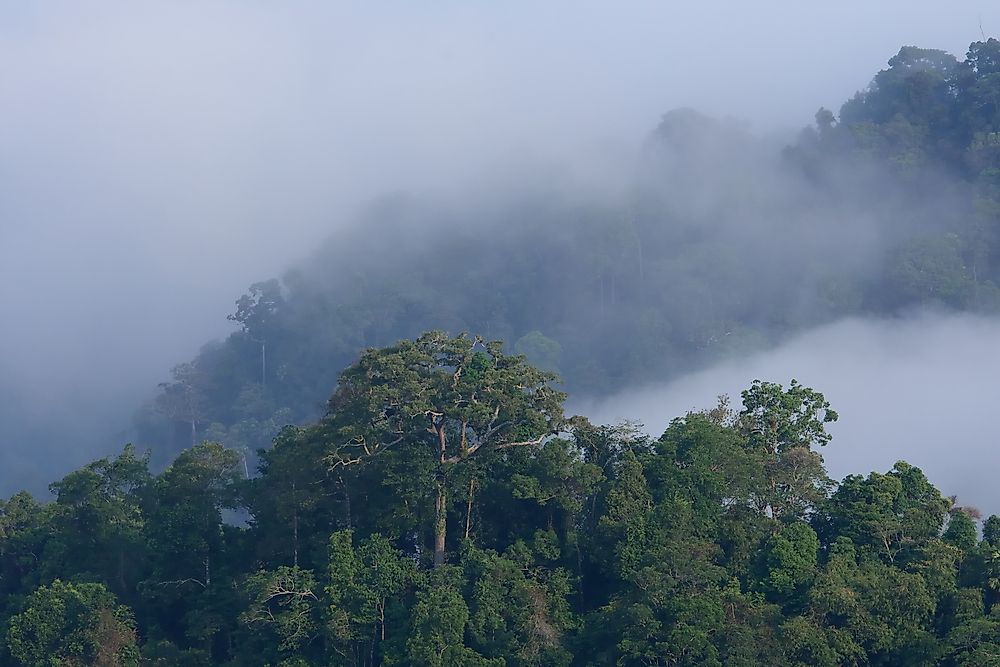What Type Of Climate Does Ecuador Have?

Ecuador is situated in the northwestern part of South America. Ecuador is one of the world's 17 megadiverse countries. The mainland of Ecuador is classified into the Sierra region, the Oriente region, and the Costa (coastal area). The majority of Ecuador has a humid and tropical climate due to its location on the equator. Areas in the Costa region are influenced by the cold Peru Current and more significant variations related to the movement of the intertropical convergence zone. The weather at the higher elevations of the Andes is subject to the local convectional process.
Precipitation Levels in Ecuador
The Oriente region experiences abundant and continuous rainfall as well as high temperatures while the Costa experiences a wet season during half the year and is relatively dry during the other half of the year. Warm water accumulates off the coast in some years, leading to El Nino which causes torrential downpours and results in ecological damage on the coastal region and the highlands. Maximum rainfall is reached in the Sierra during the equinoxes. A lengthy dry season is experienced between June and September followed by a short one from December to January.
The Santa Elena Peninsula on the southern coast experiences a truly dry climate with average rainfall per year of 4 inches at the Salinas. Areas in the highlands experience rainfall decreases towards valleys and Canyons with rainfall dropping to about 20 inches and at times below 10 inches at the center of canyons and Valleys. The largest part of the country's territory is humid and receives about 20 inches of rainfall in a year. The highlands and southern coast receive between 30 and 80 inches while the Oriente and northern coast are the wettest receiving about 120 to 240 inches of rainfall in a year.
Average Temperatures
The coast and Oriente experiences warm conditions with little temperature variations throughout the year, wider differences are however experienced between night and day. The average temperatures during the day range between 84 to 91 degrees Fahrenheit while nighttime lows range between 68 and 75 degrees Fahrenheit. The temperatures drop quite predictably as elevation increases at the rate of 9 to 11 degrees Fahrenheit every 3,300 feet ascended. Temperate climates are experienced at altitudes of 2,600 and 6,600 feet. Frost can at times be experienced at higher elevations especially in regions with low relief during the cloudless nights in the dry season. Above 16,400 feet, the peaks are covered with snow.
The Climate of the Amazon Lowlands
The climate in the Amazon rainforest is characterized by an average annual rainfall of 118 inches and average temperatures of 73.4 degrees Fahrenheit. The temperatures are however lower in the foothills of the Andes. The Ecuadorian Amazon is located on the Equator and runs through the Cuyabeno Faunistic Reserve. "Dry seasons" experience lesser rainfall compared to the rest of the year. Moisture-dependent tropical species of animals and plants are suited for the environment as it never gets totally dry.
Puyo
The city of Puyo is about 3,300 feet above sea level and is at the boundary of the Tierras Templadas, and Tierras Calientes receives an average annual rainfall of about 170 inches. Precipitation is experienced almost every day. The average temperatures are about 68 degrees Fahrenheit all year round
Quito
The city of Quito is located at an altitude of 9,350 feet making it the second highest capital on the planet. The city experiences an average of 47 inches of rainfall in a year. Abundant rainfall is experienced between October and May. The temperatures are mild throughout the year with highs of about 66 to 68 degrees Fahrenheit although some days are a bit warmer, temperature are about 48 to 50 degrees Fahrenheit although night temperatures occasionally approach freezing point.
.











